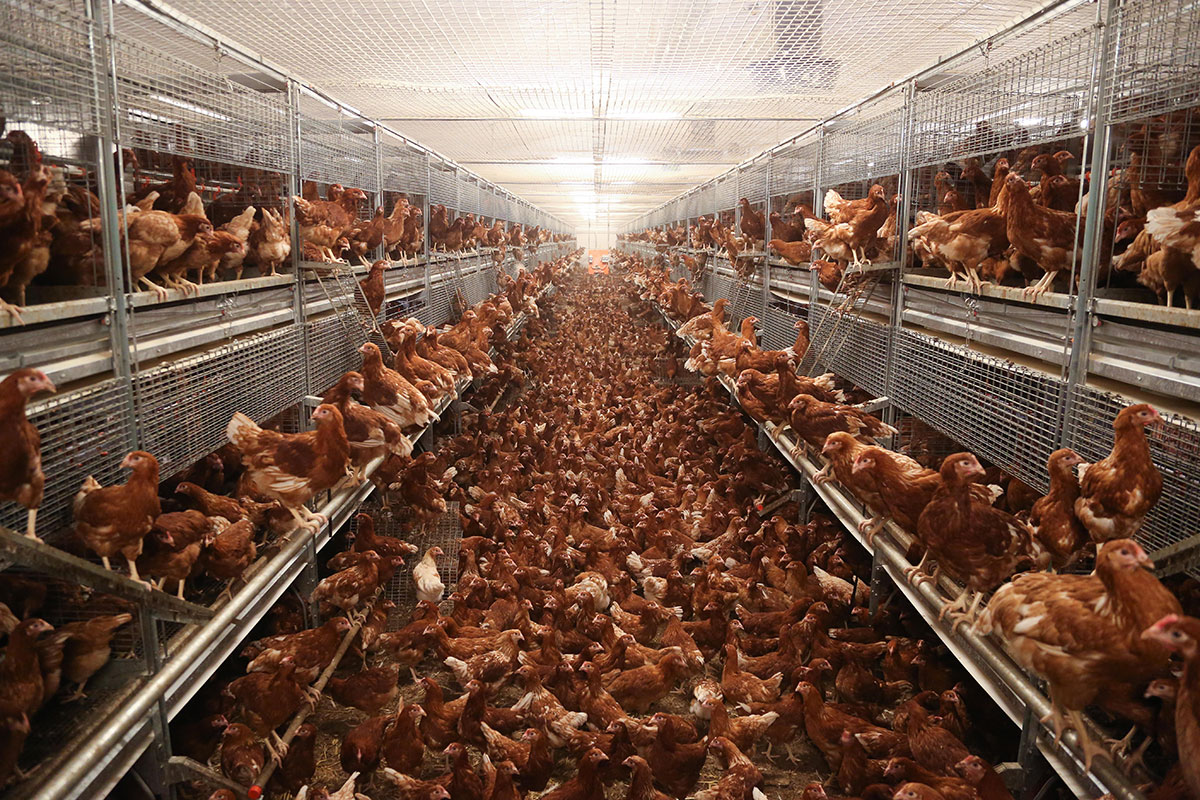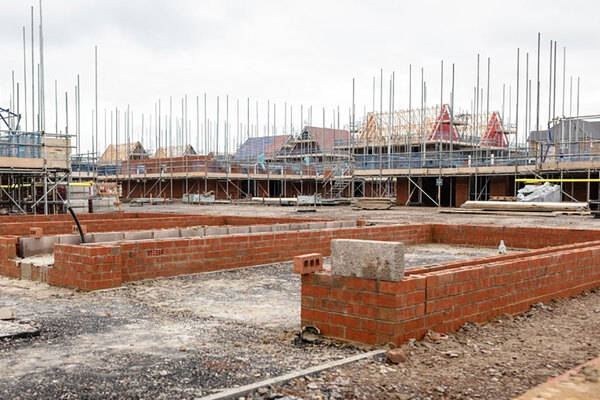You are viewing 1 of your 1 free articles

Jules Birch is an award-winning blogger who writes exclusive articles for Inside Housing
The dance between house builders and government
House builders seem to have succeeded in lobbying over nutrient neutrality – but in the meantime, the Competition and Markets Authority is again investigating the sector. Jules Birch teases out what this all means, and how it might impact social landlords’ building plans
Is what’s good for house builders still what’s good for housebuilding?
That was the assumption that underpinned first the elimination of ‘red tape’ and then the creation of the Help to Buy, but it’s one that has been severely shaken by the building safety and leasehold scandals.
But two announcements made in the past week could provide some important signals about how things will play out in future.
The relaxation of the rules on nutrient neutrality seems at first glance confirmation of the traditional assumption: house builders have long lobbied against what is effectively a block on the construction of new homes in many river catchment areas and now they seem to have got what they wanted.
And in this case they have a point: this is a real issue that affects housing associations and local authorities prevented from building affordable homes, as well as developers developing homes for sale.
“It’s hard to hear Michael Gove arguing that the ‘way EU rules are being applied has held us back’ without wondering why in that case virtually every other EU country builds more homes per head than we do”
But the issue with polluted rivers and seas is equally real and it very much remains to be seen whether what is being spun as “using our Brexit freedoms” can address both.
Visit the Wye Valley, for example, and you will find no new homes being built on the grounds they will add to nitrate pollution, but around 20 million chickens being raised in enormous sheds that are a much bigger source of it.
This looks to be more about agriculture and the state of the water industry than it is about housebuilding, even though it’s hard to hear Michael Gove arguing that the “way EU rules are being applied has held us back” without wondering why in that case virtually every other EU country builds more homes per head than we do.
The second announcement potentially has even profound implications for the future of housebuilding and house builders.
The Competition and Markets Authority (CMA) launched a housebuilding market study six months ago, but on the Friday before the bank holiday, it published an update that reveals the issues that will be its main focus.
The biggest of these is landbanking, an issue that many see as a conspiracy by the largest house builders to control the supply of land and the rate of production to maximise their profits.
For their part, house builders insist that maintaining a healthy supply of land is essential to running their business and maintaining production year by year.
“The investigation will also explore whether land banks are a symptom of the malfunctioning of the market more generally”
Up to now, independent inquiries have agreed with them. In 2008, a study by the Office of Fair Trading (OFT) (the predecessor of the CMA) found “no evidence that homebuilders have the ability to anti-competitively hoard land or withhold a large amount of land with planning permission on which they have not started to build. Instead, it is likely to be the case that ‘landbanking’ reflects the need for firms to have a pipeline of land at different stages in the development process.”
In 2018, the Letwin Review for the government found that house builder business models depend on profits from the sale of housing, not increases in the value of land – although it also focused on the reasons for slow build-out rates.
So what’s changed? Land banks held by the major house builders have grown – but probably not by enough to counteract their principal counter-argument.
The CMA acknowledges that “there are good reasons why a house builder may wish to maintain significant land banks”, and that the prospect of rising land values may create incentives to wait rather than develop straight away.
However, it also highlights potential “negative impacts on the functioning of the market” of land banks held by major firms, including limits on land available to other house builders, the potential to control local markets by building more slowly than necessary and lack of transparency about the ownership and control of land.
The investigation will also explore whether land banks are a symptom of the malfunctioning of the market more generally – and in particular whether the planning system makes holding large tracts of land essential and whether that raises further barriers to new entrants.
All that indicates a balanced approach that will go further than the OFT did in 2008, but the three other issues are also the focus of the investigation.
“Analysis by the CMA suggests that on 90% of freehold homes, infrastructure is being transferred to private estate management companies instead of the local authority, which raises issues that recall some of the abuses of the leasehold scandal”
First is whether the planning system is significantly impeding the operation of the market, particularly for small and medium-sized companies.
This will include consideration of whether central government targets for local authorities create incentives for them to favour larger developments over smaller ones.
Next comes the core issue of competition in the market: the CMA says that its initial analysis suggests that the national market shares of the biggest firms are “not concerning in themselves”, but that it continues to look at market concentration in smaller geographic areas.
Finally, there is the issue of the private management of public amenities on new estates. Traditionally, roads, street lighting and other infrastructure were adopted by local authorities on completion, but that system can mean higher costs for developers and councils alike.
Analysis by the CMA suggests that on 90% of freehold homes, they are being transferred instead to private estate management companies, which raises issues that recall some of the abuses of the leasehold scandal.
The CMA says that: “Evidence from numerous homeowners highlighted their experiences of high and/or sharply increasing charges, poor quality of maintenance and poor customer service, and their concerns about the potential effects on the value or resale of their property.”
It very much remains to be seen how far the CMA will go in its final findings, but the focus of this update (plus a parallel study of the private rental market) suggests some significant changes could be on the way.
And it is just part of a broader policy context: the Future Homes Standard is due to come into operation in 2025, but there is still scope for extensive lobbying by house builders before it does and in the meantime we are still building new homes that will require expensive retrofitting.
However, leading house builders are already scaling back their production in response to the housing market downturn. Any further deterioration will create pressure for increased government support for the industry and new opportunities to lobby against “red tape”.
The balance between the public need for housebuilding and the private interests of house builders has always been a delicate one. It is about to be tested all over again.
Jules Birch, award-winning columnist, Inside Housing
Sign up for our development and finance newsletter
Already have an account? Click here to manage your newsletters












